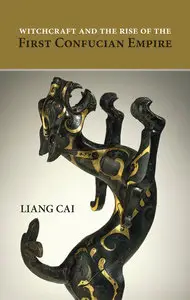Witchcraft and the Rise of the First Confucian Empire by Christian De Pee
English | 2014 | ISBN: 1438448503, 143844849X | 276 pages | EPUB | 15 MB
English | 2014 | ISBN: 1438448503, 143844849X | 276 pages | EPUB | 15 MB
When did Confucianism become the reigning political ideology of imperial China? A pervasive narrative holds it was during the reign of Emperor Wu of the Han dynasty (141–87 BCE). In this book, Liang Cai maintains that such a date would have been too early and provides a new account of this transformation. A hidden narrative in Sima Qian’s The Grand Scribe’s Records (Shi ji) shows that Confucians were a powerless minority in the political realm of this period. Cai argues that the notorious witchcraft scandal of 91–87 BCE reshuffled the power structure of the Western Han bureaucracy and provided Confucians an opportune moment to seize power, evolve into a new elite class, and set the tenor of political discourse for centuries to come.
“Readers interested in the history of the Han Empire will find this book to be an invaluable addition to the current literature on the topic. It is a must-read for all scholars and students of early imperial period China … the overall narrative is strong, convincing, and, dare I say, game changing.” — Erica Fox Brindley, American Historical Review
“Through a detailed analysis of the surviving textual evidence, Witchcraft and the Rise of the First Confucian Empire provides a powerful image of the destruction of one order in the last years of the reign of Emperor Wu and the creation of a new elite under Huo Guang. Though these events have already been the subject of at least one detailed English-language study … the narrower time-frame and more focused narrative in Liang Cai’s study provides an even more powerful picture of the enduring aftermath of Emperor Wu’s witchcraft trials.” — Journal of the Royal Asiatic Society



